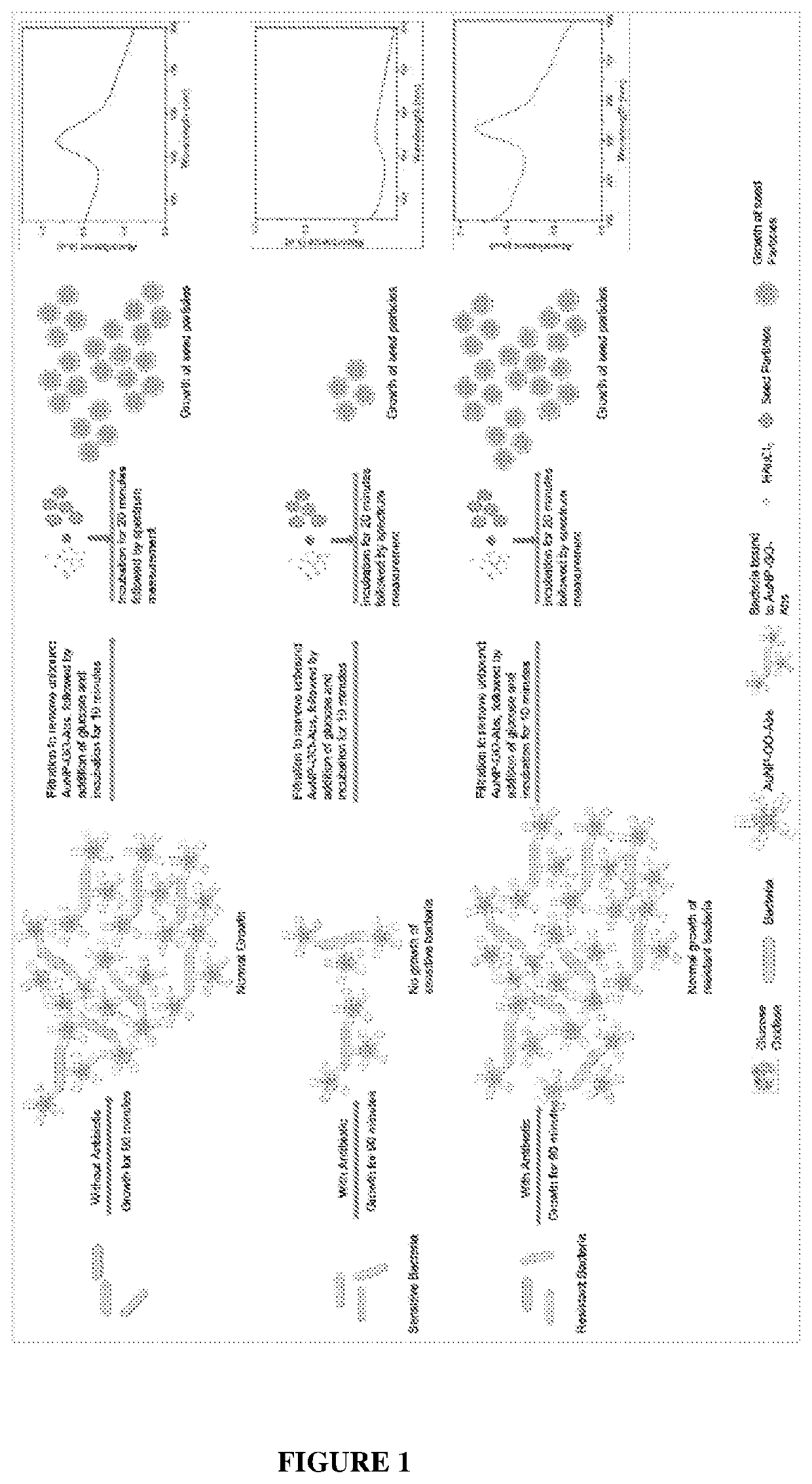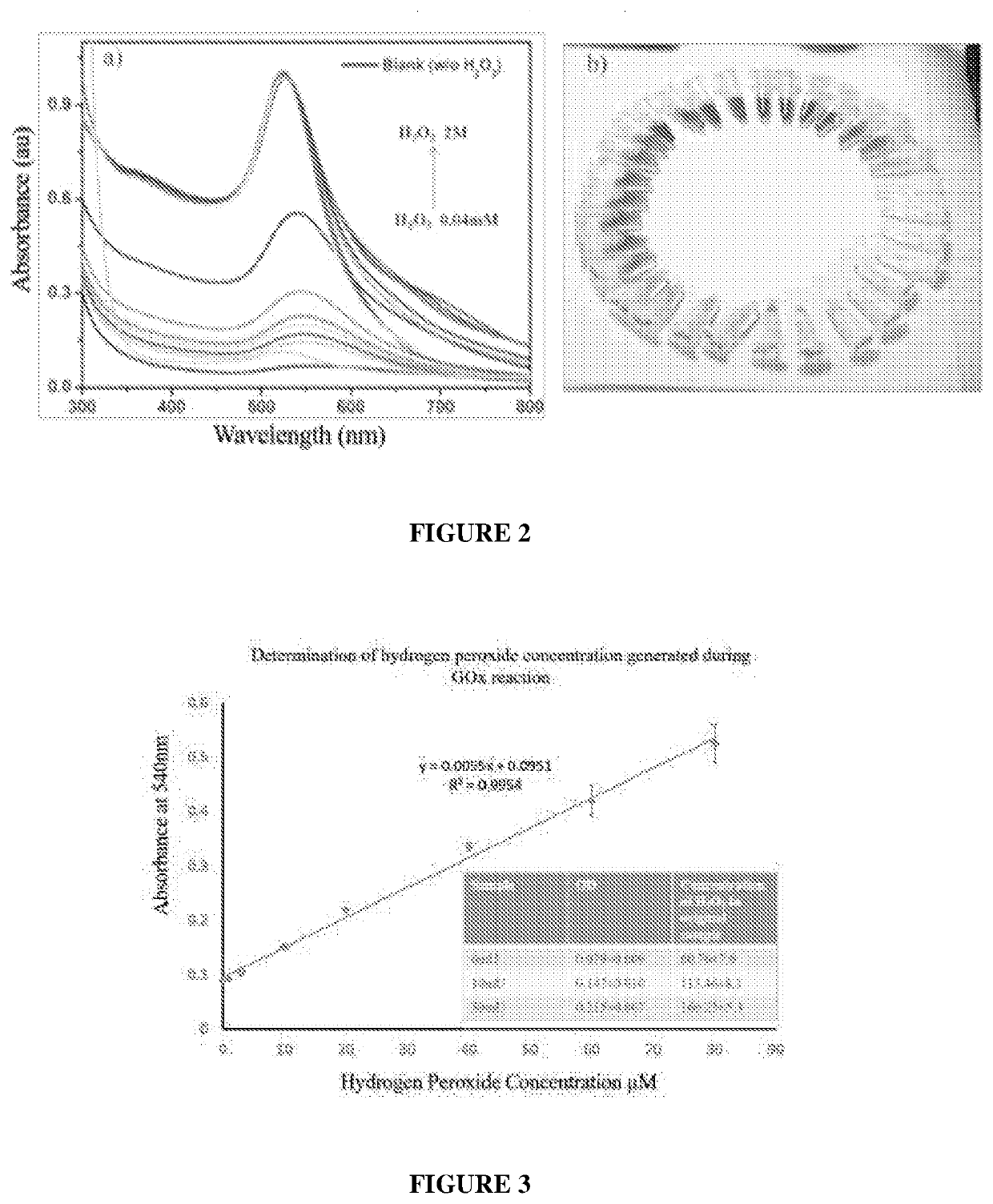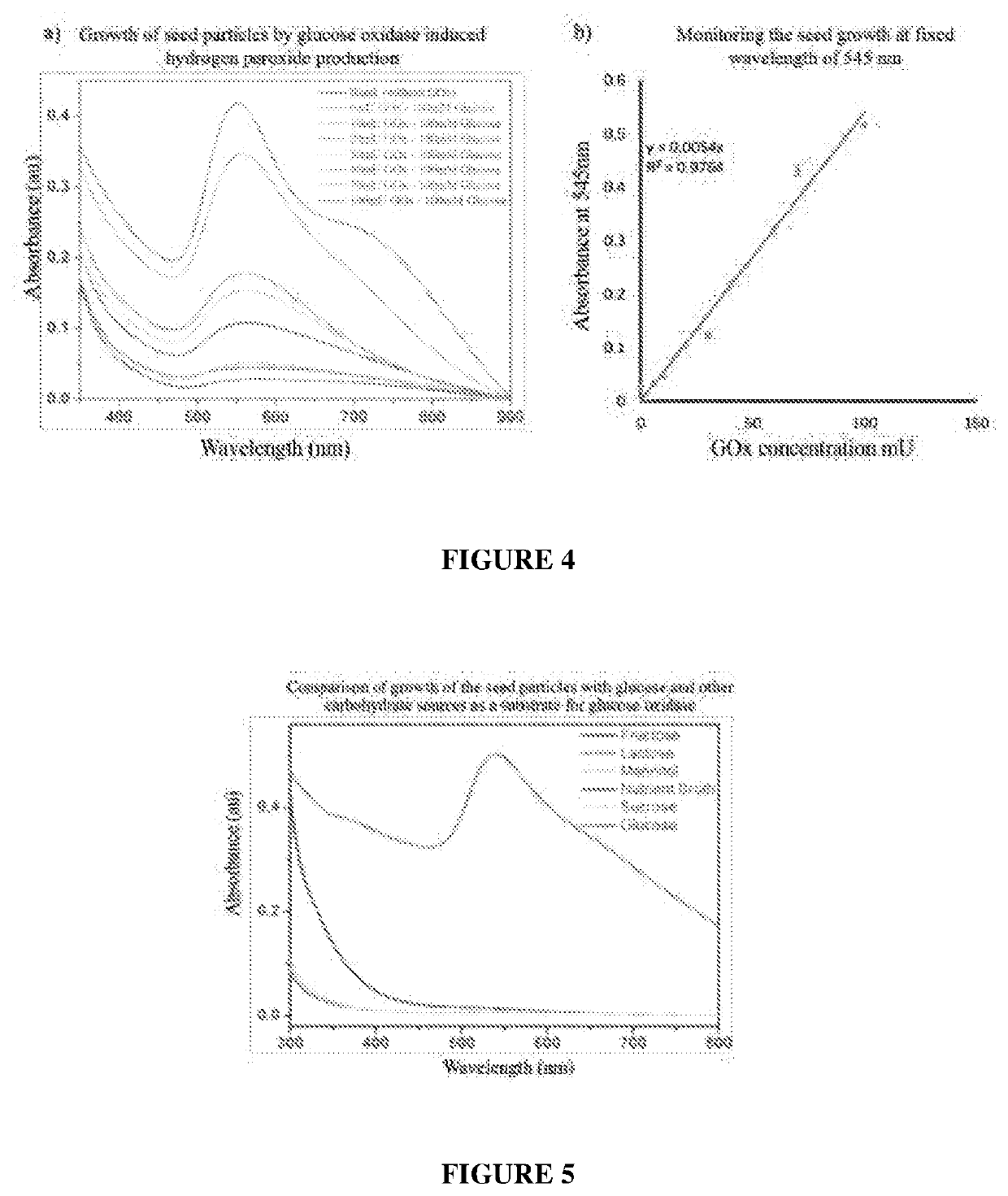Method for testing of antibiotic susceptibility in microorganisms
a microorganism and susceptibility testing technology, applied in the direction of instruments, biochemistry apparatus and processes, material analysis, etc., can solve the problems of antibiotic resistance becoming a global challenge and health concern, severe marring of healthcare setup, and antibiotic resistance becoming a global challenge and other problems, to achieve the effect of reliable, affordable, accessible, and determining antibiotic susceptibility
- Summary
- Abstract
- Description
- Claims
- Application Information
AI Technical Summary
Benefits of technology
Problems solved by technology
Method used
Image
Examples
example 1
[0124]Growth of Gold Nanoparticles in the Presence of Hydrogen Peroxide (H2O2)
[0125]Gold nanoparticles of 5 nm diameter size were incubated in the presence of HAuCl4 (1.25 mM) and varying concentrations of H2O2 for a time duration of 20 minutes The color intensity of the solutions were then monitored using UV—Visible spectroscopy. As shown in FIG. 2(a), the absorbance maxima (λmax) at around 545 nm intensified with increasing amounts of H2O2 confirming that the growth of gold nanoparticles is directly proportional to the concentration of H2O2. Further, the increasing concentration of H2O2 turns the solution red which is visible to the unaided eye, as shown in FIG. 2(b). The experiment confirmed that gold nanoparticles can be effectively used as seed particles.
Production of H2O2 Using Glucose Oxidase (GOx) and Glucose
[0126]Varying concentrations of GOx, namely, 6 mU, 10 mU and 30 mU and glucose (100 mM) were incubated at 37° C. for 10 minutes and the hydrogen peroxide produced was de...
example 2
Preparation of Nanoprobes
[0130]Citrate stabilized 24 nm gold nanoparticles, confirmed with TEM, FIG. 6b, were modified with poly(ethylene glycol)2-mercapto ethyl ether acetic acid to form AuNP-cPEG also referred to as carboxylated gold nanoparticles. The AuNP-cPEG were then conjugated with GOx and polyclonal antibody (Ab) using EDC / NHS click chemistry (Jazayeri et al., 2016, Sensing and Bio-sensing research, 9 (17-22)). FIG. 6c shows that there is a 3 nm red shift in the surface plasmon resonance (SPR) peak from 526 nm to 529 nm after modification of AuNP with cPEG. This implies a successful surface modification of AuNP with cPEG. The conjugation of GOx and Ab on AuNP-cPEG nanoparticles was confirmed by the shift in the SPR absorbance peak as depicted in FIG. 6c. As shown in the FIG. 6c, the SPR absorption band for AuNP-cPEG was found to shift from 529 to 530 nm after the conjugation with GOx and antibody. These AuNP-GOx-Ab conjugate particles are referred to as nanoprobes.
Determina...
example 3
Antibiotic Susceptibility Testing of Clinical Samples
[0132]Urine samples of infected patients were obtained from Deenanath Mangeshkar Hospital and Research Center (DMHRC), Pune, India. The antibiotic susceptibility results obtained by the method of the present invention were simultaneously cross-checked with the gold standard microdilution method (CLSI. Performance Standards for Antimicrobial Susceptibility Testing. 26th ed. CLSI supplement M100S. Wayne, Pa.: Clinical and Laboratory Standards Institute; 2016). EUCAST break point rules (Version 9.0, valid from Jan. 1, 2019) were strictly followed for the analysis and interpretation of the results (Table 1 indicates the break-point values provided by EUCAST). The concentration of the antibiotics used for the diagnostic method and the results obtained with different clinical samples are summarized in Table 1.
Assay of Clinical Samples of Male Patients Infected with E. coli
[0133]Urine sample of a male patient infected with E. coli (104 ...
PUM
| Property | Measurement | Unit |
|---|---|---|
| temperature | aaaaa | aaaaa |
| temperature | aaaaa | aaaaa |
| size | aaaaa | aaaaa |
Abstract
Description
Claims
Application Information
 Login to View More
Login to View More - R&D
- Intellectual Property
- Life Sciences
- Materials
- Tech Scout
- Unparalleled Data Quality
- Higher Quality Content
- 60% Fewer Hallucinations
Browse by: Latest US Patents, China's latest patents, Technical Efficacy Thesaurus, Application Domain, Technology Topic, Popular Technical Reports.
© 2025 PatSnap. All rights reserved.Legal|Privacy policy|Modern Slavery Act Transparency Statement|Sitemap|About US| Contact US: help@patsnap.com



